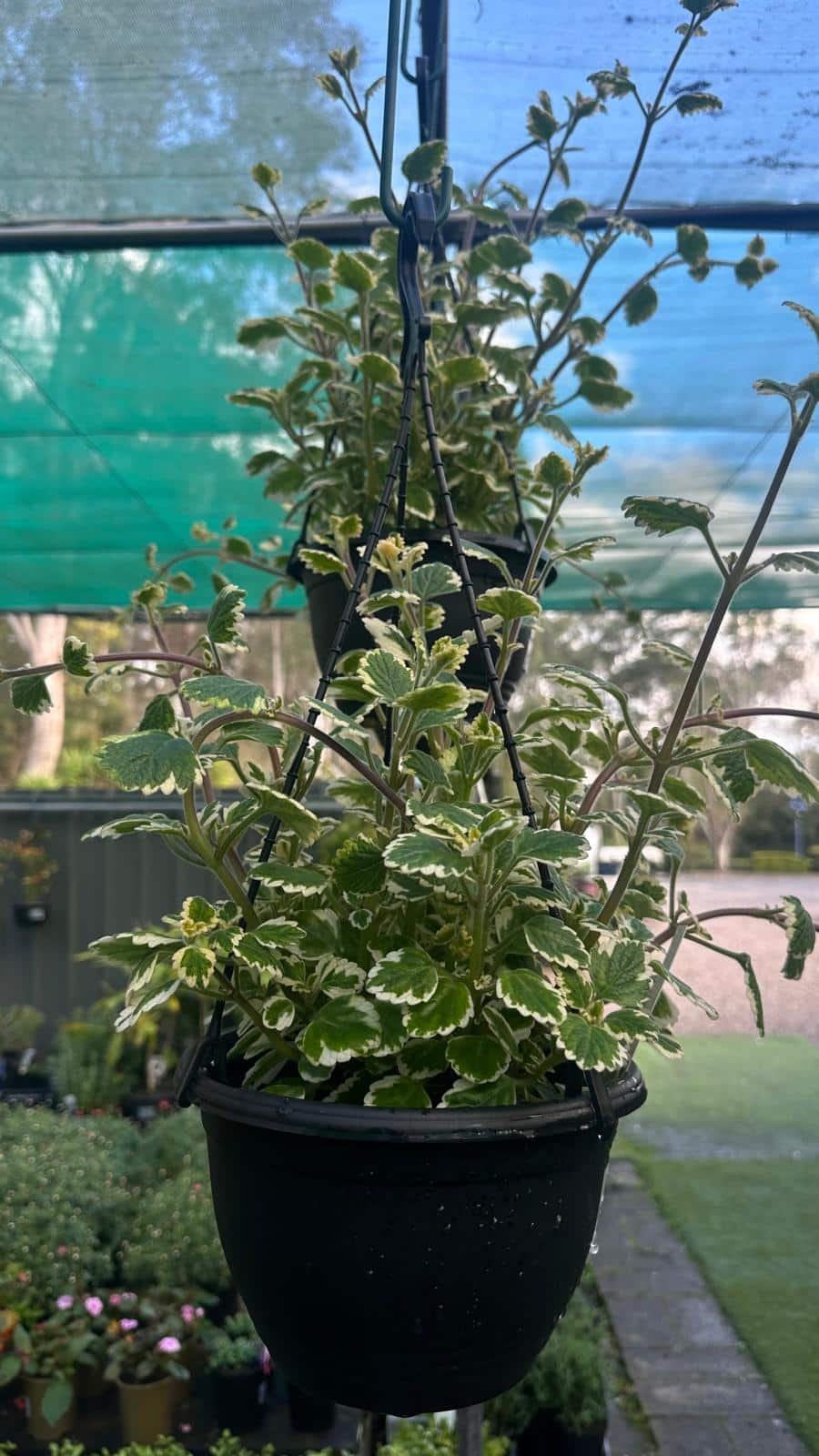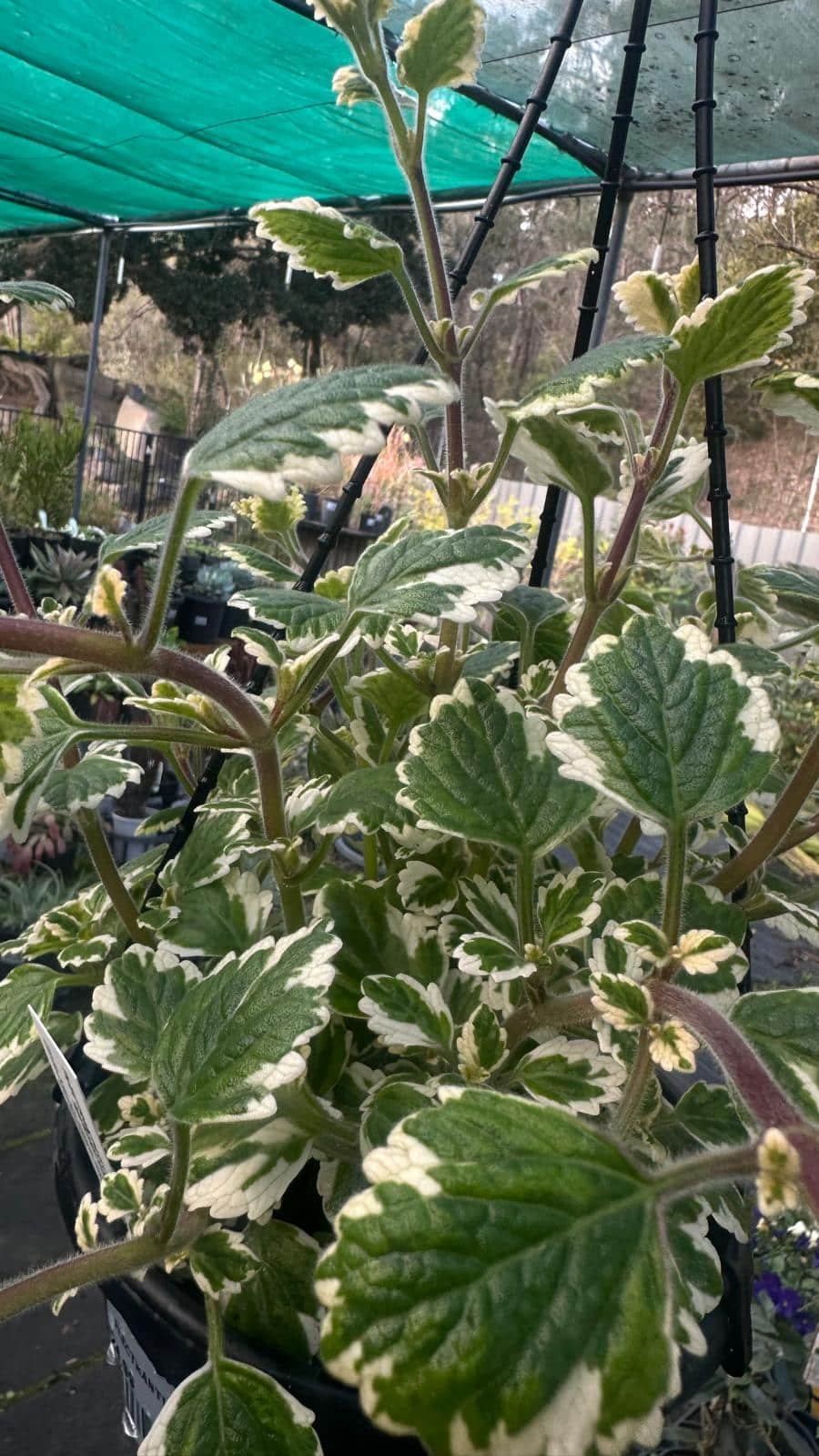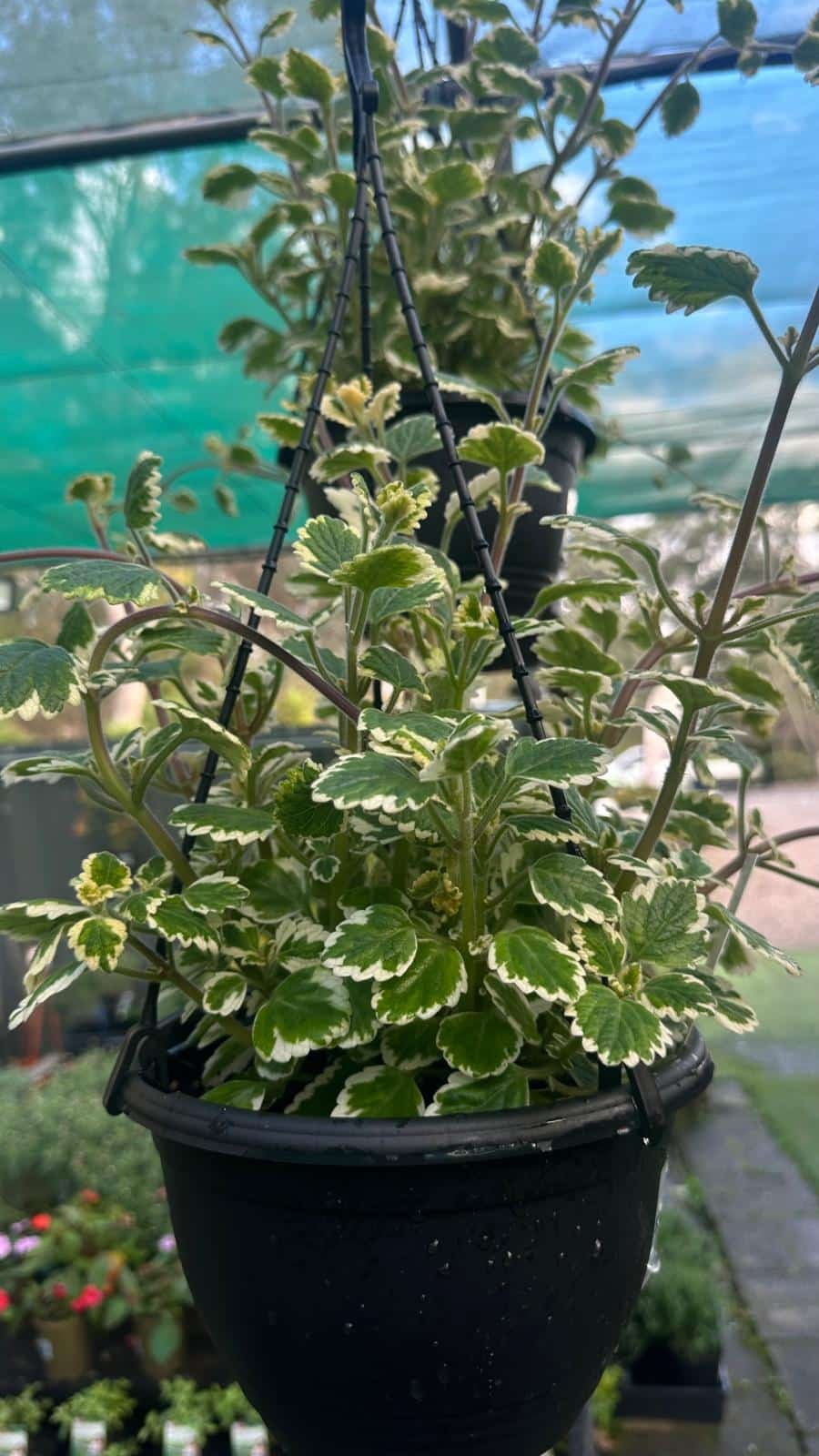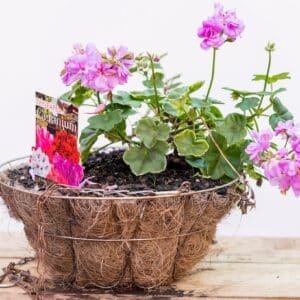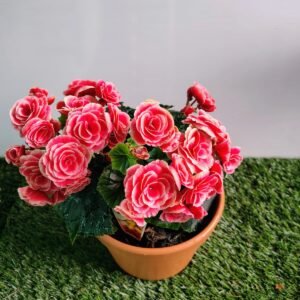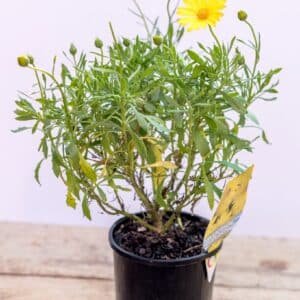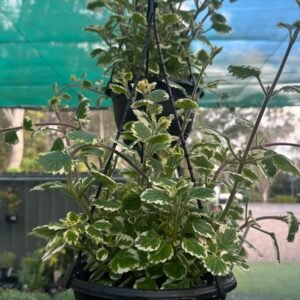Plectranthus ‘Variegated’ is a versatile and easy-to-grow plant, often called ‘Swedish Ivy’ or ‘Variegated Swedish Ivy’, although it is not a true ivy. It belongs to the mint family (Lamiaceae) and is native to parts of Africa and Australia. This plant is a favourite for its striking foliage, which features scalloped, velvety leaves with a beautiful variegation of bright green and creamy white edges. It has a vigorous, trailing habit, making it an excellent ‘spiller’ in container arrangements. While it does produce small, pale flowers, it is primarily grown for its ornamental foliage.
Usage This Plectranthus is a fantastic plant for adding texture and a bright pop of colour to your garden or indoor spaces. It’s a top choice for hanging baskets and window boxes, where its stems can cascade gracefully over the sides. It also works brilliantly as a groundcover in garden beds, or as a “filler” plant in mixed container displays. Indoors, it makes a low-maintenance and attractive houseplant for a bright spot. Its foliage has a light, mint-like fragrance when bruised.
Care Tips
- Sunlight: Thrives in a position with partial shade to full sun. The variegated foliage colour is most vibrant with good light, but it should be protected from the harsh, hot afternoon sun, which can scorch the leaves.
- Soil: Requires a well-drained, fertile soil. For pots, a standard premium potting mix is ideal. Good drainage is essential to prevent root rot.
- Watering: Water regularly, but allow the top layer of soil to dry out slightly between waterings. While it is somewhat drought-tolerant once established, it performs best with consistent moisture during the warmer months. Overwatering is the biggest risk to this plant.
- Fertilising: Feed regularly with a balanced liquid fertiliser during the main growing season (spring and summer) to encourage lush, healthy growth.
- Pruning: This is a fast-growing plant that benefits from regular pruning. Pinching or trimming the tips of the stems will encourage it to become bushier and more compact. You can prune it back by as much as half to rejuvenate it. Cuttings can be easily propagated to create new plants.
- Pests & Diseases: Generally a tough plant, but keep an eye out for common pests like aphids, mealybugs, and spider mites. Ensure good air circulation and avoid overwatering to prevent fungal diseases.
- Frost: This plant is frost-tender and will not survive a freeze. In cooler climates, it should be treated as an annual or brought indoors to a protected spot for the winter.

